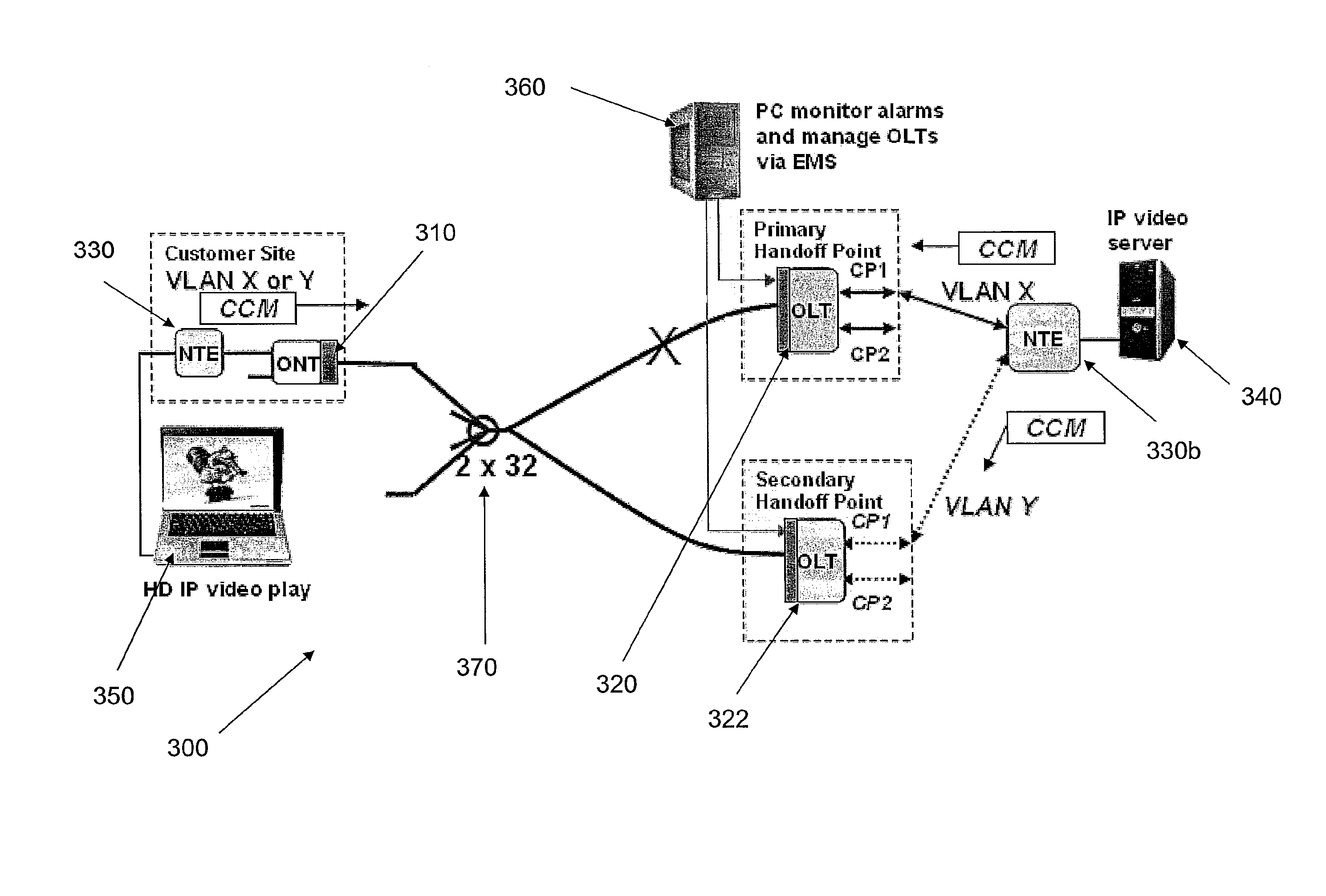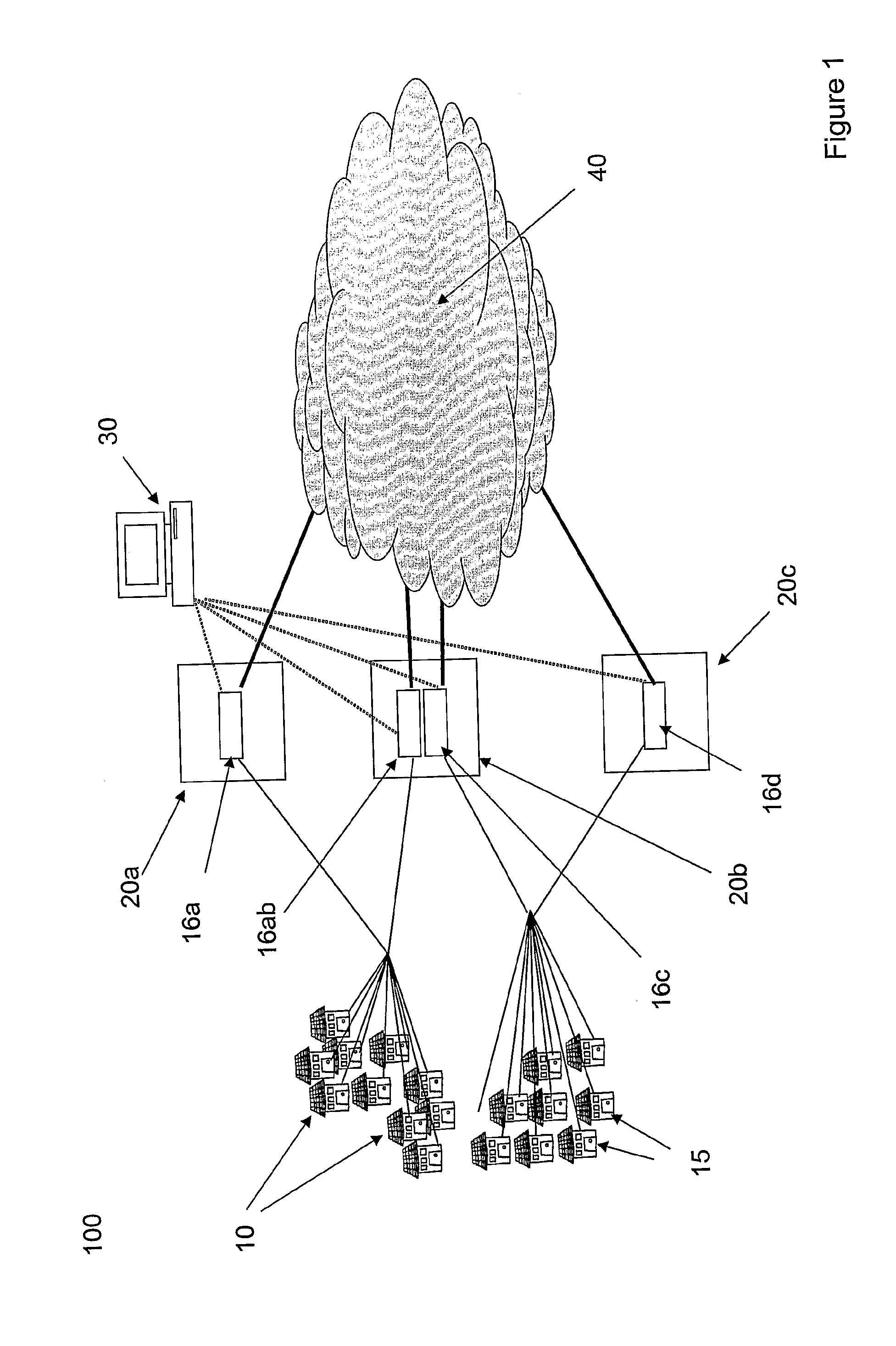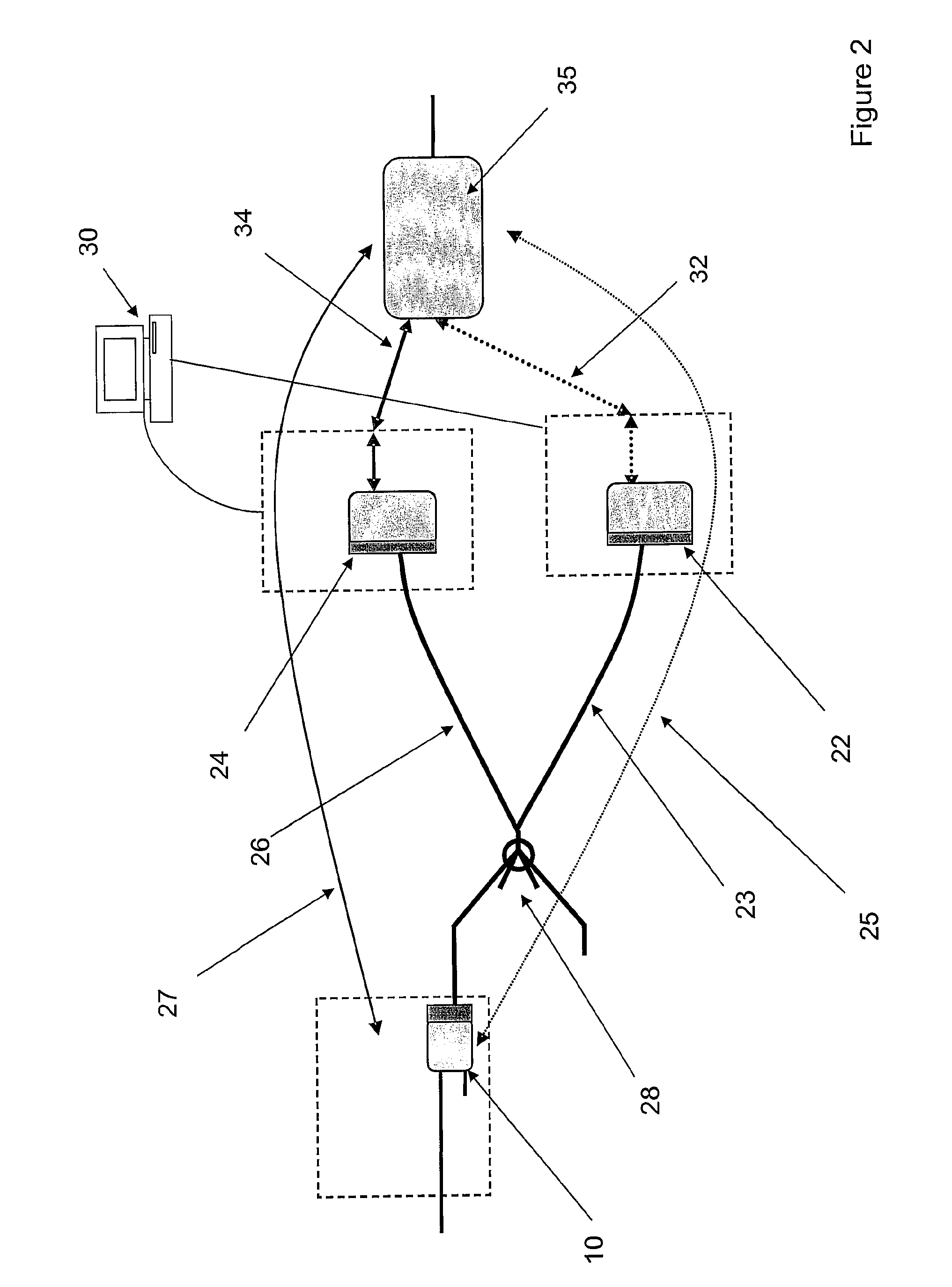Communications network
- Summary
- Abstract
- Description
- Claims
- Application Information
AI Technical Summary
Benefits of technology
Problems solved by technology
Method used
Image
Examples
Embodiment Construction
[0012]FIG. 1 shows a schematic depiction of a conventional network architecture that is used to increase the resilience of PONs. A PON 100 comprises a first plurality of optical network terminals (ONTs) 10 and a second plurality of optical network terminals (ONTs) 15. The first plurality of optical network terminals (ONTs) 10 are connected to a first optical line terminal (OLT) at network node 20a via optical fibres and a passive optical splitter. The first OLT 16a is then connected on to a core network 40 for the subsequent routing of traffic. To provide resilience, the first plurality of ONTs is also connected to a second OLT 16b at network node 20b, which is also connected to the core network 40. Similarly, the second plurality of ONTs 15 are connected to a first OLT 16c, which is located at the second network node 20b and to a second OLT 16d which is located at a third network node 20d.
[0013]Conventionally, the first plurality of ONTs will communicate with the first OLT but in ...
PUM
 Login to View More
Login to View More Abstract
Description
Claims
Application Information
 Login to View More
Login to View More - R&D
- Intellectual Property
- Life Sciences
- Materials
- Tech Scout
- Unparalleled Data Quality
- Higher Quality Content
- 60% Fewer Hallucinations
Browse by: Latest US Patents, China's latest patents, Technical Efficacy Thesaurus, Application Domain, Technology Topic, Popular Technical Reports.
© 2025 PatSnap. All rights reserved.Legal|Privacy policy|Modern Slavery Act Transparency Statement|Sitemap|About US| Contact US: help@patsnap.com



